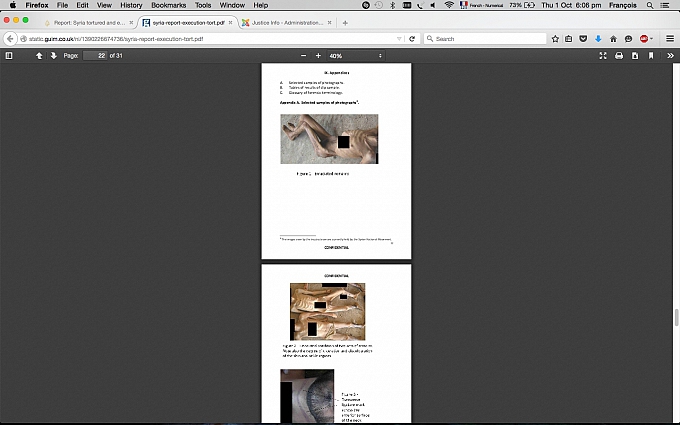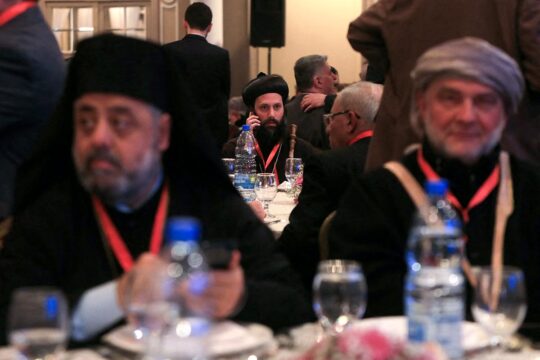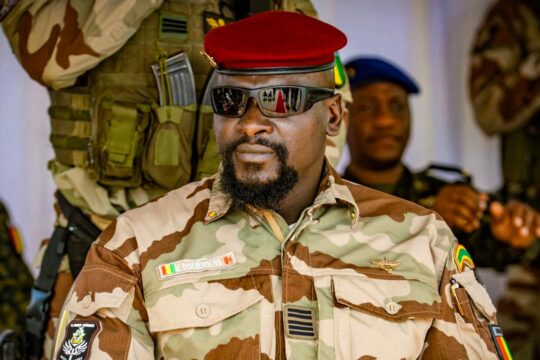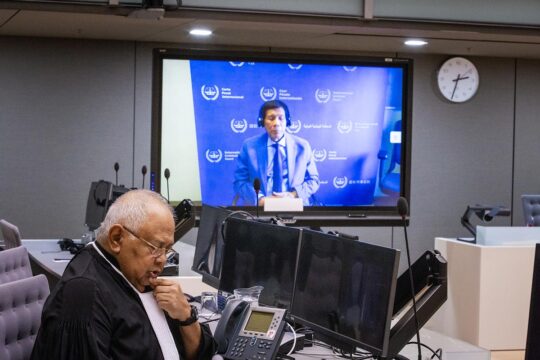The 55,000 photos of mutilated bodies in the “Caesar” report had only just arrived at the headquarters of France’s war crimes office when French Foreign Minister Laurent Fabius on Tuesday September 29 made diplomatic use of it at the United Nations. Assassins should not be part of the solution in Syria, was the Foreign Minister’s clear message. But what of the judicial case against the Syrian regime in France? We take a closer look.
“It is our responsibility to act against the impunity of the assassins," declared on Tuesday French Foreign Minister Laurent Fabius, who was in New York for the General Assembly of the United Nations. "Faced with these crimes that offend the human conscience, this bureaucracy of horror, faced with this denial of the values of humanity, it is our responsibility to act.” Laurent Fabius thus announced the opening in Paris on September 15 of a preliminary investigation “against X”, targeting the Syrian regime of Bashar al-Assad for “crimes against humanity, abduction and torture”.
Investigators at France’s Central Office against Crimes against Humanity, Genocide and War Crimes (OCLCHGCG in French) have hardly had time to start this highly mediatized case, based on several reports that rely on evidence from “Caesar”, the codename of an ex- military police photographer who fled Syria in July 2013. “We are in the starting block,” an investigator from the gendarmerie’s research unit confirmed to JusticeInfo.Net. “We have our work cut out. Given the scope of the investigations, we have no short-term deadline. The first thing is to establish whether or not we have judicial competence to continue.”
French victims?
One could perhaps ask why France took up the case so late, four and a half years after the start of repression in Syria, a year and a half after the Caesar report was presented to the UN, and more than a year after he testified to the US Congress. According to Laurent Fabius, it is essentially because only now are French diplomats reacting to the conclusion that a case cannot be brought before the International Criminal Court because of the Russian veto. “That explains the decision of the French Prosecutor,” he told Radio-France Internationale (RFI) on Tuesday, “because there may be French victims amongst those tortured and killed.”
The “Caesar case” is based on some 55,000 digital photographs of 11,000 dead bodies. For two years, this photographer working for the documentation service of the military police meticulously took four or five shots of each body in two hospitals of the Syrian capital Damascus, to create a file of the dead. The sight of horrors perpetrated on the bodies led the forensic photographer to join the rebellion and flee, taking with him this overwhelming evidence of the current regime’s brutality. “Caesar” is now said to be living in France with several members of his family, under strong police protection.
The report itself was drawn up in early 2014 by a team of experts mandated by the United Nations, including three former international Prosecutors: Desmond da Silva and David Crane from the Special Tribunal for Sierra Leone; and Geoffrey Nice from the International Criminal Tribunal for the former Yugoslavia. When they were sent to the Middle East in January 2014, their mandate was very simple: evaluating the credibility of “Caesar” and his photographs.
“We were sceptical,” David Crane told a press conference at the UN on April 15, 2014. “In our field, we rarely have access to direct, specific evidence – text or photographs – of crimes against humanity, war crimes or genocide.”
But they were convinced after the first meeting. “The conclusion of our report,” says Crane, “is that the photographs and the witness himself are credible and can stand up to challenge before an international or national jurisdiction, and that what he [Caesar] documented over two years constitutes elements of direct, specific evidence of mass, systematic killings […] perpetrated by the Assad regime.”
Two legal options
Technically, French judicial authorities now have two options to pursue the case: extraterritoriality or universal competence. For the first one, there must be French citizens among the victims. For the second, a suspected perpetrator must be present or resident in France. The main witness (Caesar) provides material evidence of the “effects” of abuses and torture, but he was not present. If the French magistrates consider that they have jurisdiction, the challenge will be to confront victims from the photographs, witnesses to the abuses and suspected perpetrators, if ever they can be arrested.
A first judicial investigation on Syria is already under way at the war crimes unit in Paris, concerning the alleged involvement of two French companies, Qosmos and Amesys, in setting up an electronic surveillance system for the Assad government to monitor its opponents. Several Libyan victims have already been heard in this case by Paris investigating magistrates. Even if it is too early to say whether the two cases can be joined or whether they will result in a trial, the Caesar report is a big new judicial thorn in relations between Paris and the regime of Bachar al-Assad.






